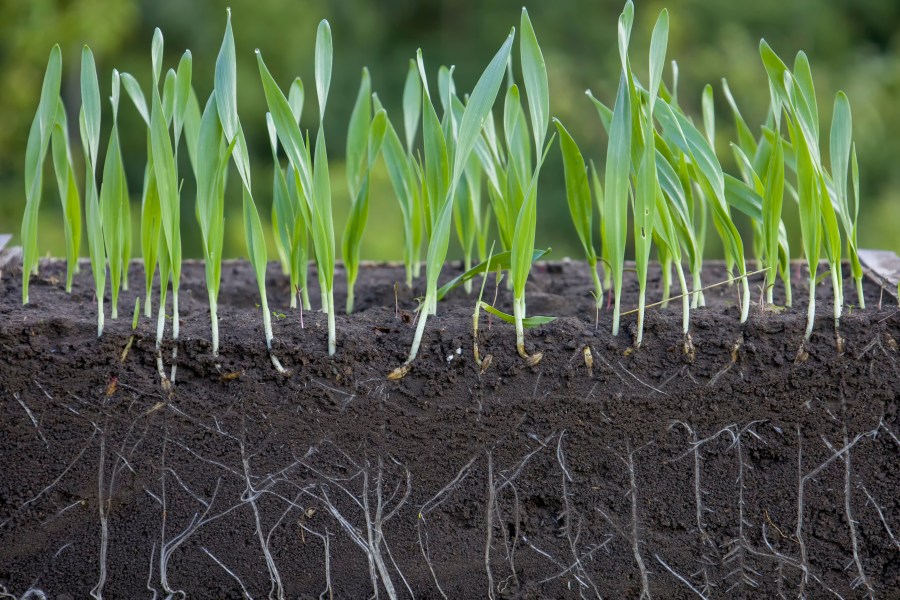Feeding soil biology – it’s a hot topic within sustainable farming, but why’s it important and what does it mean?
Soil contains a diverse range of microbes including bacteria, fungi and protozoa. It’s how these organisms interact with each other that drives critical processes that support crop production, such as nutrient cycling and uptake, organic matter decomposition and disease suppression.
Feeding soil microbes
However, soil microbes have to be fed in order to survive and multiply, and for them to maximise their role within agriculture.
One such role is modulating the development of crop seedlings, says QLF Agronomy’s David Maxwell. “This triggers a number of actions such as root hair elongation, root branching and a gravitropic effect on roots. It’s due to a process researchers coin the ‘rhizophagy cycle’, where microbes obtain nutrients from the soil, and nutrients are extracted from microbes in the cells of plant roots.”
So the greater the root network and soil biology, the greater the chance the young seedling will have of mining residual or applied nutrition in the soil.
“Of course, if we feed the soil directly through a product such as L-CBF Boost and realign that co-dependency between the crop and the microbes, the plant can reserve it’s own energy and redirect into other useful processes such as developing shoots and roots,” says David.
Liquid carbon additive
L-CBF Boost consists of filtered cane molasses and a range of nutrients and growth promoting compounds, including nitrogen, potash, sulphur, amino acids and organic acids. It’s applied at planting and can be used with a range of crops from autumn and spring combinables to maize, potatoes and sugar beet.
David says from a visual perspective, this results in greener, healthier looking plants that can better withstand challenging conditions. “With greener leaves, crops improve their photosynthetic capacity, growing up and away quickly during the establishment phase.
“But what happens below ground is important too – roots play a critical role in plant development, pushing through the soil profile to mine and cycle minerals. There’s also the legacy effect of the organic matter left behind by those roots, which benefits the following rotation.”
Trial results
Pot tests conducted earlier this year investigated the effect of L-CBF Boost on early stage oilseed rape plants. The results showed that compared with untreated, the canopy area (cm2 per plant) was 49% bigger in the treated pots. As for the final fresh shoot weight, this was 3.5g compared with 2.5g untreated.
According to David, this is valuable for helping OSR to grow away from potential cabbage stem flea beetle damage, or the impact of frost, and it’s all thanks to feeding the soil microbes.
Microbe survival
Providing a food source also means there’s a greater chance of soil microbes remaining active for longer, he says, with respiring bacteria contributing to soil temperature. “Again, this is useful for optimising establishment within challenging conditions. And any bacteria that remain in the soil are rich in proteins and amino acids, thus continuing to feed the soil biology cycle,” concludes David.
For more information, visit www.qlf.co.uk or call 01952 727754




